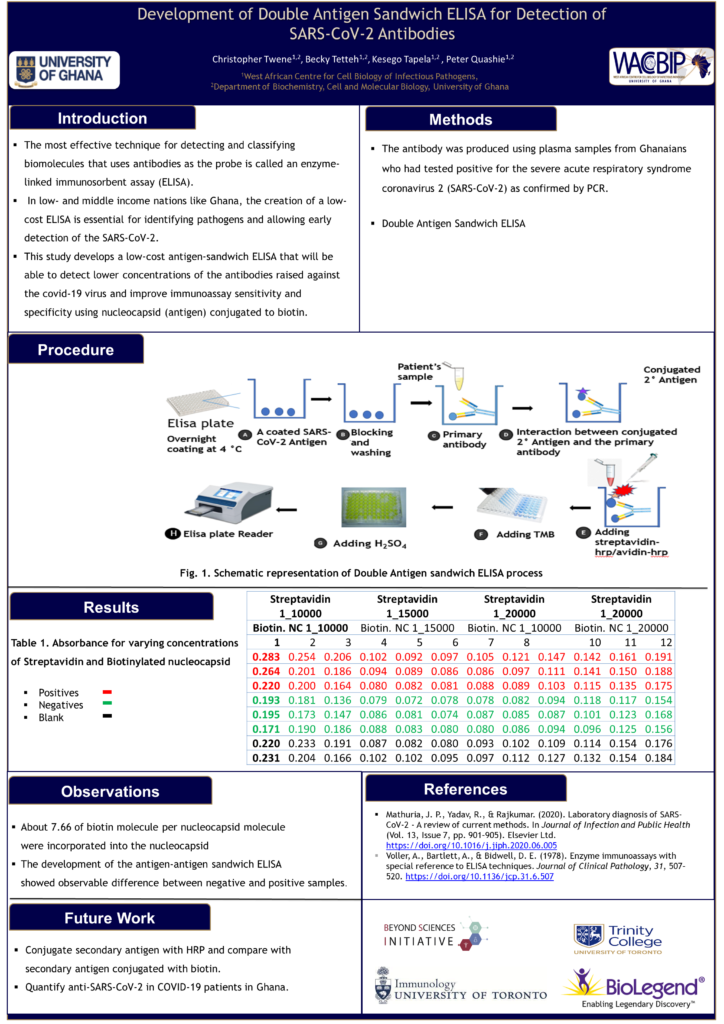Christopher Twene
Conference 2023 Presentation
Project title
Development of a double-Antigen Sandwich ELISA for the detection of SARS-CoV-2 antibodies
Authors and Affiliations
Christopher Twene1, Kesego Tapela2, Becky Tetteh Ewurama3, Dr. Peter Quashie4
1. West African Center for cell Biology and Infectious Pathogen
2. Department of Biochemistry, University of Ghana, Accra, Ghana.
Abstract
Background
The most effective technique for detecting and classifying biomolecules that uses antibodies as the probe is called an enzyme-linked immunosorbent assay (ELISA). In low- and middle-income nations like Ghana, the creation of a low-cost ELISA is essential for identifying pathogens and allowing early detection of the SARS-CoV-2 epidemic. This study develops a low-cost antigen-sandwich ELISA that will be able to detect lower concentrations of the antibodies raised against the covid-19 virus and improve immunoassay sensitivity and specificity using nucleocapsid (antigen) conjugated to biotin.
Methods
Plasma samples were obtained from Ghanaians who had tested positive for the SARS-CoV-2 as confirmed by PCR. To help improve the sensitivity of the test, about 7.66 of biotin molecule per nucleocapsid molecule was used as the secondary antigen which was expressed in the laboratory Double-antigen sandwich ELISA was performed using primary antigen, secondary antigen conjugated to biotin and pooled plasma samples (positive and negative). Enzyme labeled streptavidin-HRP was added and was stopped with H2SO4.
Results
About 7.66 of biotin molecule per nucleocapsid molecule was incorporated into the nucleocapsid. The ELISA showed significant differences between negatives and positive samples, however high backgrounds (high noise-to-signal ratio) was observed which indicate that there was excessive or unexpected higher color development of the blank.
Conclusions
The development of the antigen-antigen sandwich ELISA was successful as experiment showed significant differences between negative and positive samples. However, the high backgrounds observed may be due to non-specific binding of the antibody to non-target proteins. It could also be that there was cross contamination leading to false positive or negative results. We recommend that, secondary antigen conjugated with HRP can also be tried to compare with the Biotinylated secondary antigen. In addition, we will try optimizing various buffer conditions used such as pH, washing buffer, concentrations of the biotinylated antigen and other necessary conditions.

